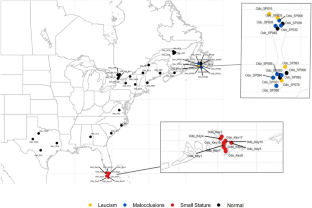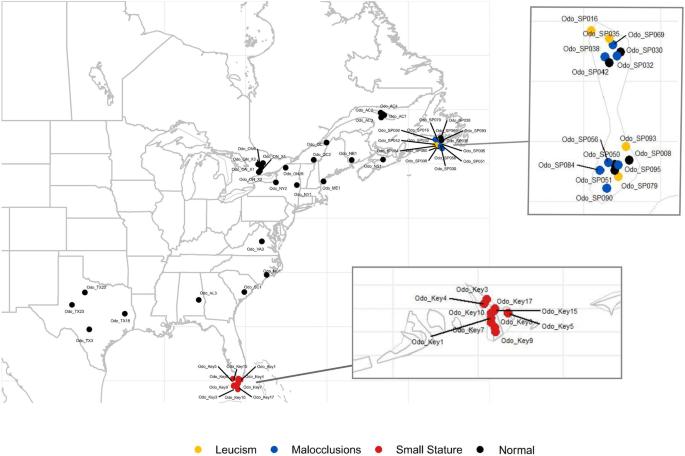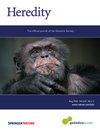Island demographics and trait associations in white-tailed deer
IF 3.9
2区 生物学
Q2 ECOLOGY
引用次数: 0
Abstract
When a population is isolated and composed of few individuals, genetic drift is the paramount evolutionary force and results in the loss of genetic diversity. Inbreeding might also occur, resulting in genomic regions that are identical by descent, manifesting as runs of homozygosity (ROHs) and the expression of recessive traits. Likewise, the genes underlying traits of interest can be revealed by comparing fixed SNPs and divergent haplotypes between affected and unaffected individuals. Populations of white-tailed deer (Odocoileus virginianus) on islands of Saint Pierre and Miquelon (SPM, France) have high incidences of leucism and malocclusions, both considered genetic defects; on the Florida Keys islands (USA) deer exhibit smaller body sizes, a polygenic trait. Here we aimed to reconstruct island demography and identify the genes associated with these traits in a pseudo case-control design. The two island populations showed reduced levels of genomic diversity and a build-up of deleterious mutations compared to mainland deer; there was also significant genome-wide divergence in Key deer. Key deer showed higher inbreeding levels, but not longer ROHs, consistent with long-term isolation. We identified multiple trait-related genes in ROHs including LAMTOR2 which has links to pigmentation changes, and NPVF which is linked to craniofacial abnormalities. Our mixed approach of linking ROHs, fixed SNPs and haplotypes matched a high number (~50) of a-priori body size candidate genes in Key deer. This suite of biomarkers and candidate genes should prove useful for population monitoring, noting all three phenotypes show patterns consistent with a complex trait and non-Mendelian inheritance.


白尾鹿的岛屿人口统计学和性状关联。
当一个种群孤立且由少数个体组成时,遗传漂变是最主要的进化力量,并导致遗传多样性的丧失。近亲繁殖也可能发生,导致基因组区域因血缘关系而相同,表现为同源染色体(ROH)和隐性性状的表达。同样,通过比较受影响个体和未受影响个体之间固定的 SNP 和不同的单倍型,可以揭示相关性状的基因。圣皮埃尔岛和密克隆岛(SPM,法国)上的白尾鹿(Odocoileus virginianus)种群的白化病和畸形发病率很高,这两种疾病都被认为是遗传缺陷;在佛罗里达群岛(美国)上,鹿的体型较小,这是一种多基因性状。在这里,我们旨在重建岛屿人口结构,并通过假病例对照设计确定与这些特征相关的基因。与大陆鹿相比,两个岛屿种群的基因组多样性水平降低,有害突变增多;Key鹿的全基因组差异也很明显。匙鹿的近亲繁殖水平较高,但ROHs并不长,这与长期隔离是一致的。我们在ROHs中发现了多个与性状有关的基因,包括与色素变化有关的LAMTOR2和与颅面异常有关的NPVF。我们将 ROHs、固定 SNPs 和单倍型联系起来的混合方法与 Key deer 中大量(约 50 个)先验体型候选基因相匹配。这套生物标记物和候选基因将有助于种群监测,因为所有三种表型都显示出与复杂性状和非孟德尔遗传一致的模式。
本文章由计算机程序翻译,如有差异,请以英文原文为准。
求助全文
约1分钟内获得全文
求助全文
来源期刊

Heredity
生物-进化生物学
CiteScore
7.50
自引率
2.60%
发文量
84
审稿时长
4-8 weeks
期刊介绍:
Heredity is the official journal of the Genetics Society. It covers a broad range of topics within the field of genetics and therefore papers must address conceptual or applied issues of interest to the journal''s wide readership
 求助内容:
求助内容: 应助结果提醒方式:
应助结果提醒方式:


